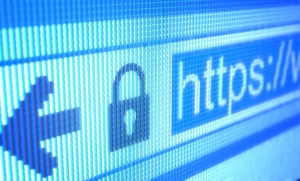How To Determine a Fake Website
There are a lot of scammers out there, and one of the things they do is create fake websites to try to trick you into giving them personal information. Here are some ways that you can determine if a website is fake or not:
 How Did I Get Here?
How Did I Get Here?
Ask yourself how you got to the site. Did you click a link in an email? Email is the most effective ways scammers direct their victims to fake sites. Same thing goes with links from social media sites, Danger Will Robinson! Don’t click these links. Instead, go to websites via a search through Google or use your bookmarks, or go old school and type it in.
Are There Grammar or Spelling Issues?
Many fake sites are created by foreign entities using “scammer grammar”. So their English is usually broken, and they often make grammar and spelling mistakes. And when they use a translating software, it may not translate two vs too or their vs there etc.
Are There Endorsements?
Endorsements are often seen as safe, but just because you see them on a site doesn’t mean they are real. A fake website might say that the product was featured by multiple news outlets, for instance, but that doesn’t mean it really was. The same goes for trust or authenticating badges. Click on these badges. Most valid ones lead to a legitimate site explaining what the badge means.
Look at the Website Address
A common scam is to come up with a relatively similar website URL to legitimate sites. Ths also known as typosquatting or cybersquatting. For instance, you might want to shop at https://www.Coach.com for a new purse. That is the real site for Coach purses. However, a scammer might create a website like //www.C0ach.com, or //www.coachpurse.com. Both of these are fake. Also, look for secure sites that have HTTPS, not HTTP. You can also go to Google and search “is www.C0ach.com legit”, which may pull up sites debunking the legitimacy of the URL.
Can You Buy With a Credit Card?
Most valid websites take credit cards. Credit cards give you some protection, too. If they don’t take plastic, and only want a check, or a wire transfer, be suspect, or really don’t bother.
Are the Prices Amazing?
Is it too good to be true? If the cost of the items on a particular page seem much lower than you have found elsewhere, it’s probably a scam. For instance, if you are still looking for a Coach purse and find the one you want for $100 less than you have seen on other valid sites, you probably shouldn’t buy it.
Check Consumer Reviews
Finally, check out consumer reviews. Also, take a look at the Better Business Bureau listing for the company. The BBB has a scam tracker, too, that you can use if you think something seems amiss. Also, consider options like SiteJabber.com, which is a site that collects online reviews for websites. Just keep in mind that some reviews might be fake, so you really have to take a broad view when determining if a site is legit or one to quit.
Robert Siciliano personal security and identity theft expert and speaker is the author of Identity Theft Privacy: Security Protection and Fraud Prevention: Your Guide to Protecting Yourself from Identity Theft and Computer Fraud. See him knock’em dead in this Security Awareness Training video.


























